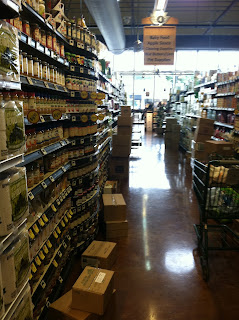The 3 Most Important Aspects of New Orleans
Diversity and Its Effect on New Orleanian Culture
As much as we hate calling New Orleans a cultural "gumbo", I think we would be fooling ourselves if we did not recognize the accuracy of this statement. A gumbo can mean many, many things to many different people. However, one thing they all have in common is the combination of a wide array of ingredients that produce an outstandingly delicious meal. New Orleans is home to a huge African-American, Latino, Asian, and Caucasian population as well as a safe haven for people of diverse religious backgrounds and gays and lesbians. Through the process of combining all of these cultures, New Orleans offers a sense of acceptance for all people. Its hard to feel like an outcast in this city.
This acceptance is evident in the "southern charm" many New Orleanians have and the way people nod or say "hello" when you pass them on the street. If you need directions in this city, anyone and everyone will be willing to help (good luck with getting accurate directions, though). Everyone in this city is here to enjoy life, enjoy people, and most importantly enjoy the experiences of living in such an awesome city.
Food as Culture
In New Orleans, our food defines our culture. The food in the city also represents the diversity of our culture. We are a city known for French beignets, Creole and Cajun dishes such as etouffee, and German sausages. The diversity of our food draws us together; we work towards creating dishes that encompass an array of cultural characteristics.
Because of this emphasis on food, New Orleanians as a community often focus on the issue of hunger. As we witnessed at the second harvest food bank, hunger is currently being fought with great effort. Thanks to programs such as this one, we are able to work towards abolishing hunger in families of lower income. This common goal also works towards pulling our community and citizens together and unifying us as a people.
Food as Comfort
The thought of being raised on a typical American diet of pot roast and mashed potatoes makes me want to scream. I consider myself extremely lucky to have been raised in an area where my childhood food memories involve crawfish boils, jambalaya, and Étouffée. When I enjoy these foods today, the innocent memories and comforting feelings of childhood swell back. I'm not the only one who experiences this, either. If you ask any native New Orleanian about a comforting childhood memory, it will most likely involve food. Food also ties into all of the social events we have down here in Southeast Louisiana. A Mardi Gras party isn't a party without a king cake or a massive pot of jambalaya; Thanksgiving isn't quite right without a "Turducken;" and Spring time wouldn't be complete without the array of foods at St. Joseph's altar. It's through these foods that we develop a community, and through this community that we develop a sense of comfort.





















